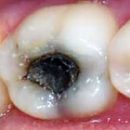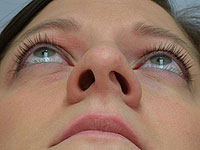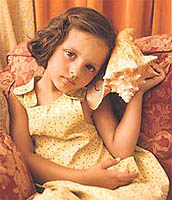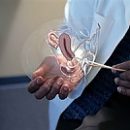You have noise in your ears? And what it looks like - on the noise of the surf, the rust of foliage or the hum of wires? This is not a joke, but a very important question that will help the doctor to determine what your form of otoscolerosis and give you relevant recommendations for its treatment and prevention.
Content
The essence of the disease: a healthy bone in the lesion focus is replaced by a newly formed by the spongy, spongy - spongy bone rich in vessels. More correct is the name «Depugiosis». Usually, the otosklectic focus is located in the field of the runway window, more often at the front pole of it. Less likely - in the area of the window of the snail, internal auditory passage, semicircular channels.
Stages of otosclerosis:
- histological;
- Clinical.
So far the changes are localized only in the bone, the process is clinically nothing manifested. With the transition of the process to the ring bundle, the tears of stirruption mobility is limited, and the transmission of sounds through the middle ear gradually deteriorates. There are progressive hearing loss and the feeling of noise in the ears.
Otosclerosis - hereditary monogenic disease with autosomal - dominant type of inheritance. There is an opinion on the hereditary inferiority of the ears labyrinth, expressed in high sensitivity to ultrasound. Various units of the auditory analyzer are affected, including his cortical department. More correctly consider otosclerosis as a dystrophic process, developing throughout the auditory analyzer, and not only in the labyrinth capsule. In the development of otosclerosis, a large role is attached to inorganic components. Revealed a decrease in the content of many bioactive elements in the kosnaya substance.
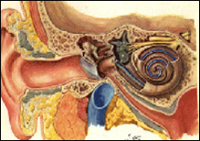
Distinguish tympanal, cochlear and mixed form of otosclerosis.
The tympanal form - the foundation of the string of the string in the runway window is disturbed, its mobility is broken.
Cochlear form (more rare) - the distribution of the process on the snail, sometimes on the eve and half-breeded channels, as well as on the snail window and the inner hearing pass.
With otosclerosis, there is a progressive reduction of hearing and the feeling of noise in the ears, which is carried out much harder to the patients than with other forms of hearing loss. In describing the nature of noise in the ears, patients compare it with various phenomena of nature and household environment (the noise of the surf, the rust of foliage, the hum of wires).
The noise in the ears during the otoklerosis is divided into three degrees:
I degree - the feeling of the abnormal noise of the patient almost does not bother, and the presence of this symptom is detected with an active survey;
II degree - complaints about noise in the ears along with other complaints;
III degree - the feeling of subjective noise is the leading complaint of the patient.
Several symptoms characteristic of the otosclerosis - improving hearing acuity during the patient's stay in a noisy environment, lowering the intelligibility of speech when swallowing and chewing, simultaneously conversing several people and with tense attention. Often concerned about dizziness and equilibrium disorders. As a rule, it is short-term dizziness arising when moving, quick inclons or heads. Can manifest themselves nausea and vomiting. Reason for dizziness - intoxication of nerve endings when distributing the excretion on semicircular channels and an internal hearing passage. Other symptoms - pain in the ears, a sense of tingling and plow in them, headache, downgrade, sleep disruption.
With an external examination of the ear, there is observed:
- wide external auditory passages;
- reduction or absence of sulfur secretion;
- lowering the sensitivity of the skin of the outer auditory passage and the eardrum;
- increased mobility of the eardrum;
- thinning of the eardrum.
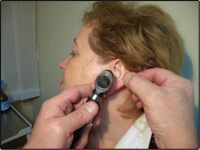
Timpanal form - a significant decrease in hearing acuteness. When studying, the hearing is detected by the lesion of the sound hardware. After testing, the ears of the ear does not improve.
Cochlear form - the progressive loss of hearing is not only low, but also on high tones.
Most patients disrupt the nature of vestibular reactions in experimental samples.
For the diagnosis of otosclerosis, a tonal audiometry is used - this is a measure of hearing acuity, that is, the sensitivity of the auditory body to the sounds of different heights.
With a radiological method of diagnostics - the smallest details of the morphological structure of the temporal bone are considered, characteristic changes in the design of the velocities and snails, semicircular channels and an internal auditory pass are found.
Improvements of hearing can be expected mainly during tympanal form.
The most effective treatment is a surgical surgery. Main ways of operations:
- gentle - indirect, direct mobilization, perforation and fragmentation of the base of the aspiration, isolation of the otosclerotic focus;
- Radical - Stapedectomy and Stapidoplasty. Currently, stapidoplast is mainly produced - part of the tears are removed and replaced with a prosthetic from synthetic material (Teflon). The effectiveness of these operations is very high - 95%.

